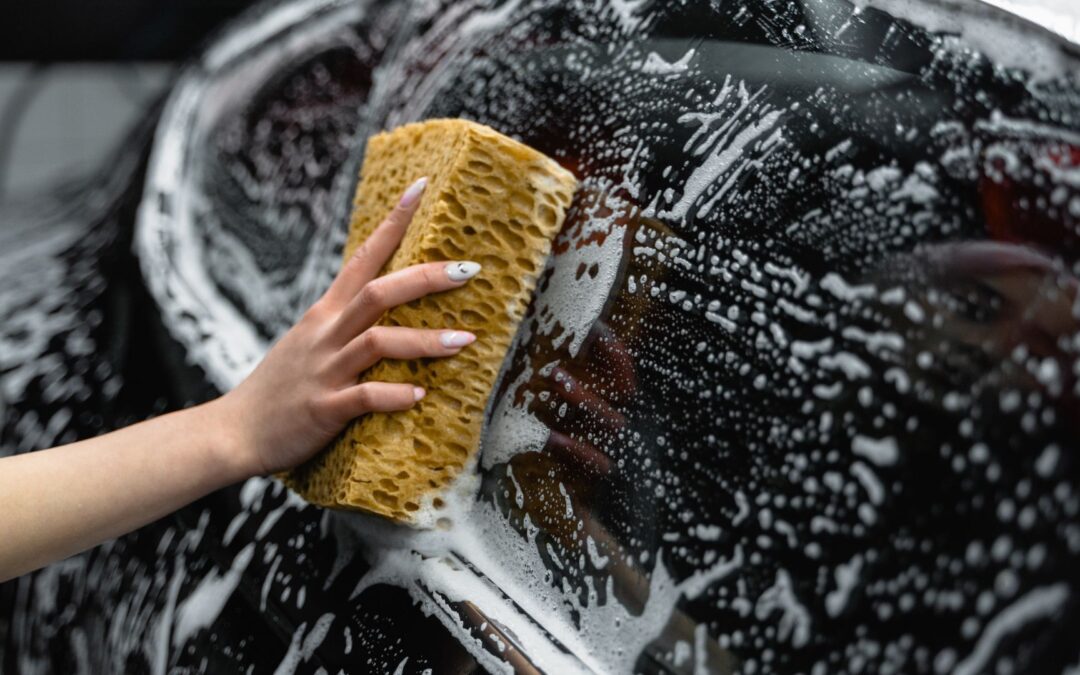A professionally installed vinyl wrap does more than advertise your brand, it protects your vehicle’s factory paint, adds a layer of scratch resistance, and lets you transform your car, van, or truck into a striking visual statement. But like any investment, a vehicle wrap requires proper care to stay looking fresh, vibrant, and damage-free. Neglect can lead to edge lifting, fading, staining, and premature wear, cutting short your wrap’s lifespan and diminishing its marketing impact.
In this comprehensive guide, we’ll cover everything you need to know to maintain your wrapped vehicle year-round: from daily cleanliness and weekly routines to seasonal protocols, emergency touch-ups, and long-term protection strategies. Follow these best practices to keep your wrap in showroom condition for 3–7 years, or longer, increasing both your brand’s visibility and your vehicle’s resale value.
1. Why Wrap Maintenance Matters
- Preserve Vibrant Colors & Gloss
UV rays, road grime, and airborne pollutants gradually dull vinyl. Regular cleaning and protective treatments maintain color depth and shine. - Prevent Edge Lifts & Peeling
Grime, moisture, and salt can seep under wrap edges. Left unchecked, this leads to curling, tearing, and full-panel delamination. - Extend Lifespan & ROI
Quality wraps typically last 3–5 years; diligent care can push them to 6–7 years, maximizing your return on investment. - Protect Factory Paint
A well-maintained wrap shields factory paint from chips and fading. When it’s time to remove or replace the wrap, the original finish remains pristine.
2. Daily & Weekly Care Routine
2.1 Daily Quick-Check
- Visual Inspection: Walk around your vehicle and glance for obvious dirt buildup, bird droppings, sap, or edge lifting.
- Spot Rinse: If you spot fresh sap or droppings, rinse immediately, do not let them sit. A quick garden-hose spray removes most contaminants before they etch the vinyl.
2.2 Weekly Hand-Wash
Automated car washes, especially those with brushes or harsh chemicals, can damage vinyl. Instead, commit to a weekly hand-wash using the two-bucket method:
- Gather Supplies
- Two buckets (one with wrap-safe soap, one with rinse water)
- pH-neutral automotive shampoo formulated for vinyl
- Microfiber wash mitt or chenille sponge
- Edgeless microfiber drying towels
- Initial Rinse
- Hose down the vehicle (nozzle off or on a low setting) to remove loose grit.
- Soapy Wash
- Dip your mitt into the soapy bucket. Wash one section at a time (roof, hood, doors), using light pressure.
- Rinse Mitt
- Before reloading soap, rinse the mitt in the clean bucket to avoid grinding dirt back into the wrap.
- Final Rinse & Dry
- Thoroughly rinse away all soap.
- Blot dry with microfiber towels, don’t wipe back and forth, which creates swirl marks.
3. Seasonal Maintenance Strategies
3.1 Summer Protection
- UV Sealants: Every 3–4 months, apply a spray-on ceramic or vinyl protectant. These products form a hydrophobic, UV-blocking layer that repels dirt and resists fading.
- Shaded Parking: Whenever possible, park under covers or in garages. If that’s not available, use a reflective windshield sunshade to lower interior and exterior temperatures.
- Gentle Cooling Before Washing: After intense sun exposure, let the vehicle cool for 10–15 minutes before rinsing. Sudden temperature changes can stress vinyl.
3.2 Winter Care
- Snow & Ice Removal: Use a soft-bristled broom or microfiber snow mitt to sweep away loose snow. For thin ice, mist a vinyl-safe de-icer (alcohol-based, not citrus) and let it soak, then gently brush off.
- Salt & De-Icer Rinses: Road salt and de-icing chemicals corrode adhesives and paint underneath. Incorporate an under-carriage rinse once a week to flush chemicals.
- Warm-Water Washes: On mild days, warm water (not hot) helps dissolve salt without stressing vinyl; avoid pressure washing.
4. Emergency Spot-Treatment
No matter your routine, accidents happen, bird droppings, bug splatter, tar, and tree sap are common culprits. Address them promptly:
- Bird Droppings & Sap
- Rinse immediately. If residue remains, gently dab with 70% isopropyl alcohol on a microfiber cloth, then rinse.
- Bug Splatter
- Use a dedicated bug-and-tar remover rated safe for vinyl. Spray, let sit 30–60 seconds, then wipe away with a soft towel.
- Tar & Grease
- Tar removers formulated for vinyl (e.g., Stoner Tarminator) safely dissolve buildup—rinse thoroughly afterward.
- Minor Scratches or Scuffs
- Light surface scuffs may buff out with a wrap-safe polish and microfiber applicator. Deeper tears require professional patching.
5. Edge Sealing & Small Repairs
Vinyl edge lifts, even tiny ones, invite dirt and moisture. Inspect edges monthly and address lifts under 1/4″ immediately:
- Edge Sealant: A small dab of vinyl adhesive or edge-seal product (available from wrap manufacturers) restores adhesion.
- Heat Tacking: Gentle application of a heat gun (low setting) reactivates adhesive; press edges back flat with a plastic squeegee.
- Professional Touch-Up: For tears or large lifts, schedule a spot repair. A certified installer will patch or replace affected panels to prevent further damage.
6. Advanced Protective Add-Ons
To further fortify your wrap against the elements, consider these enhancements:
- Clear-Coat Overwrap Film
- A transparent vinyl layer that adds scratch and UV resistance. Lifespan matches or exceeds the wrap itself (3–7 years).
- Spray-On Ceramic Coatings
- Bonds to vinyl at the molecular level, offering enhanced hydrophobicity and UV defense. Lasts 6–12 months per application.
- Perforated Window Film
- Protects rear windows while maintaining visibility from inside. Reduces interior heat and adds branding.
7. Long-Term Storage & Layover Tips
If your wrapped vehicle will sit idle, seasonal fleets or demo units, take these precautions:
- Breathable Car Covers: Use covers made for vinyl wraps. Avoid plastic tarps that trap moisture.
- Climate-Controlled Garages: Aim for stable temperatures (50–75°F) to prevent adhesive creep or vinyl brittleness.
- Periodic Check-Ins: Inspect stored vehicles every 2–4 weeks. Brush off dust, check for edge lifting, and address minor issues promptly.
8. Maximizing Your Wrap’s Lifespan
By following these care and maintenance strategies, you can:
- Extend Wrap Life to 6–7 Years: Pushing well beyond the typical 3–5-year expectancy.
- Maintain Pristine Paint: A sacrificial vinyl layer preserves factory paint for future resale.
- Sustain Marketing Impact: A vibrant wrap keeps your brand message fresh and compelling, mile after mile.
Conclusion
A vinyl wrap is a powerful tool for brand promotion and paint protection, but only if it’s properly cared for. By implementing a routine of gentle hand-washes, seasonal safeguards, prompt spot treatments, and professional edge sealing, you’ll keep your wrapped vehicle looking its best year-round.
Ready to give your wraps the TLC they deserve? Contact TNT Signs and Graphics for expert installation, maintenance products, and professional repair services:
📞 (707) 555-1234
🌐 www.tntsignsandgraphics.com
Let us help you protect your investment and maintain a flawless, head-turning fleet, every single day.




